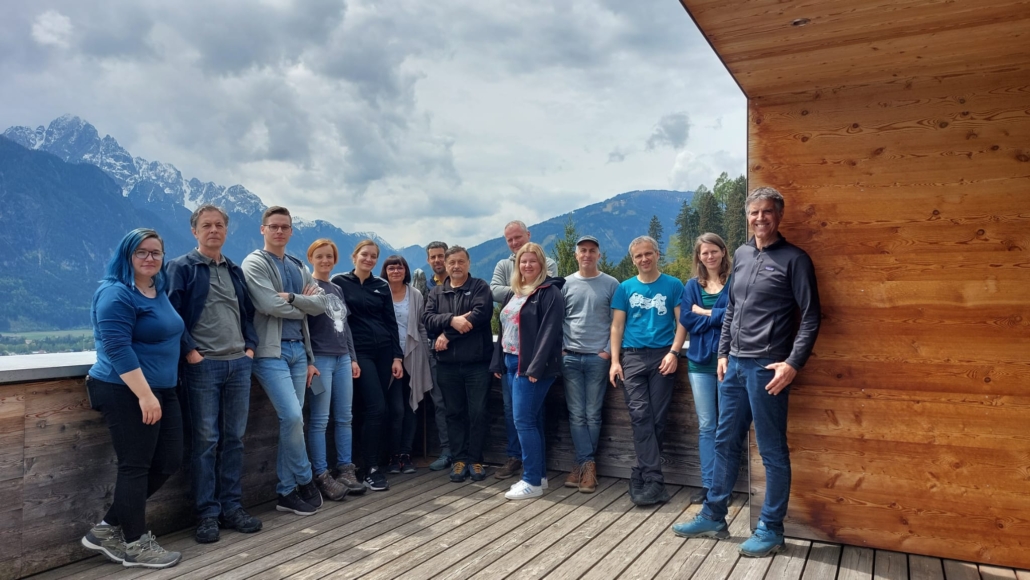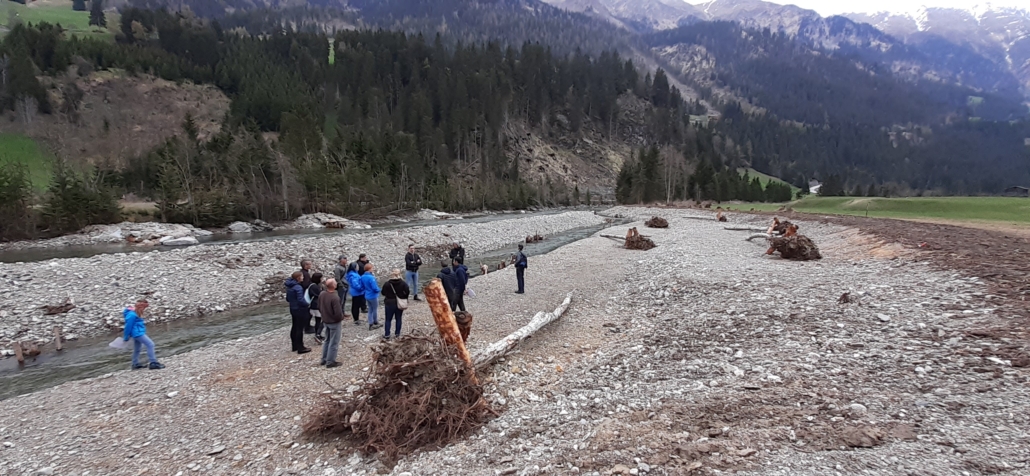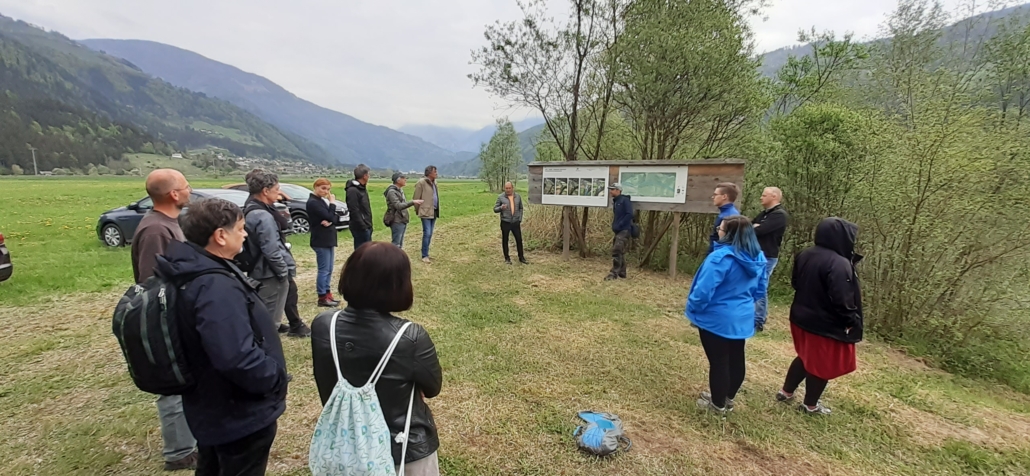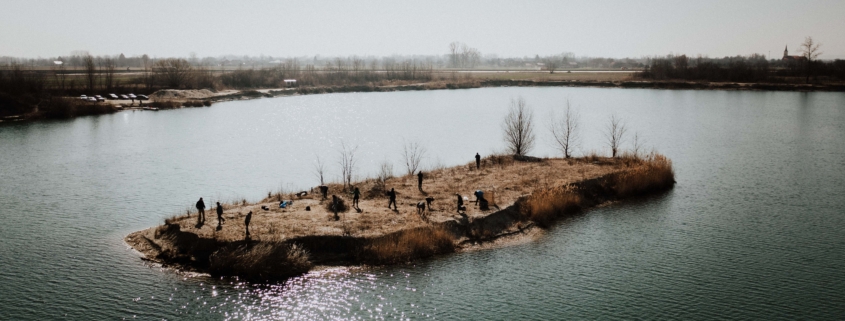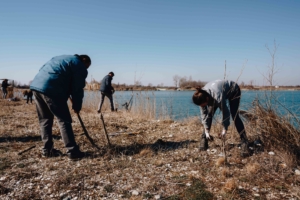Finally, after 2 years of the pandemic, in July of 2022, the DRAVA LIFE team could visit one of the wildest and most impressive rivers in Western Europe: river Allier, a tributary to river Loire, in France. Thanks to an early initiative of restoration actions starting in the 1980ies, including dam prevention and removal plus land purchase, river Allier has a model reference character for similar rivers in Europe due to its natural condition. River Allier nowadays is largely protected as Natura 2000 sites and partly as “Réserve Naturelle Val d Állier”. The river is 421 kilometres long. It has its source in the Cevennes mountains 50 kilometres east of Mende and flows 5 km west of Nevers into the Loire river.
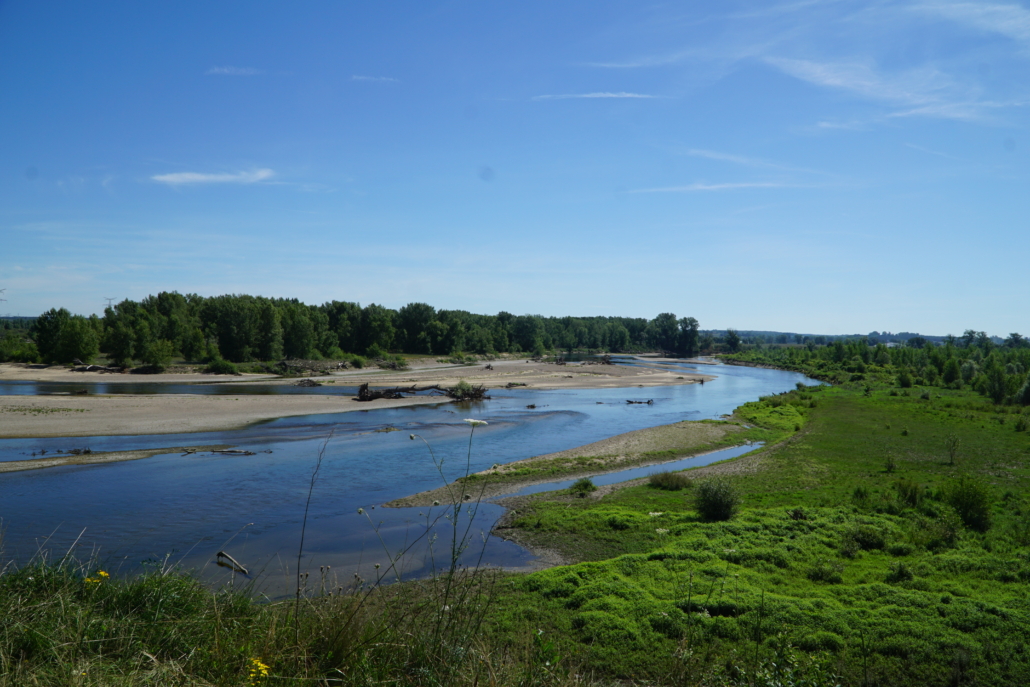
View on Allier from the steep bank in Chemilly (c) WWF
14 persons of the DRAVALIFE team plus four other interested colleagues went on this trip from Austria and Croatia to Le Veurdre in France. A majority of the group went by night-train and connecting trains from Vienna and Zagreb via Zurich until Le Veurdre in France. The small, charming village is based just on the shore of river Allier. It was the perfect place to stay for our river expeditions.
The DRAVALIFE team went all this way to France in order to see and learn from river Allier. The excursion consisted of several stages. Dr. Gregory Egger, ecologist and professor for landscape ecology at the Karlsruher Institute for Technology (KIT), introduced the team to the special situation on river Allier. During an excursion to Allier and its floodplains close to Chemilly we learned about the natural development of different floodplain habitats. In several scientific studies over the past years the succession processes of the vegetation and the long-term riverine development have been documented. Especially the development of the black-poplar (Populus nigra) floodplains, the xerothermic grasslands as well as the invasive neophytes Fallopia japonica were highlighted during the excursion.
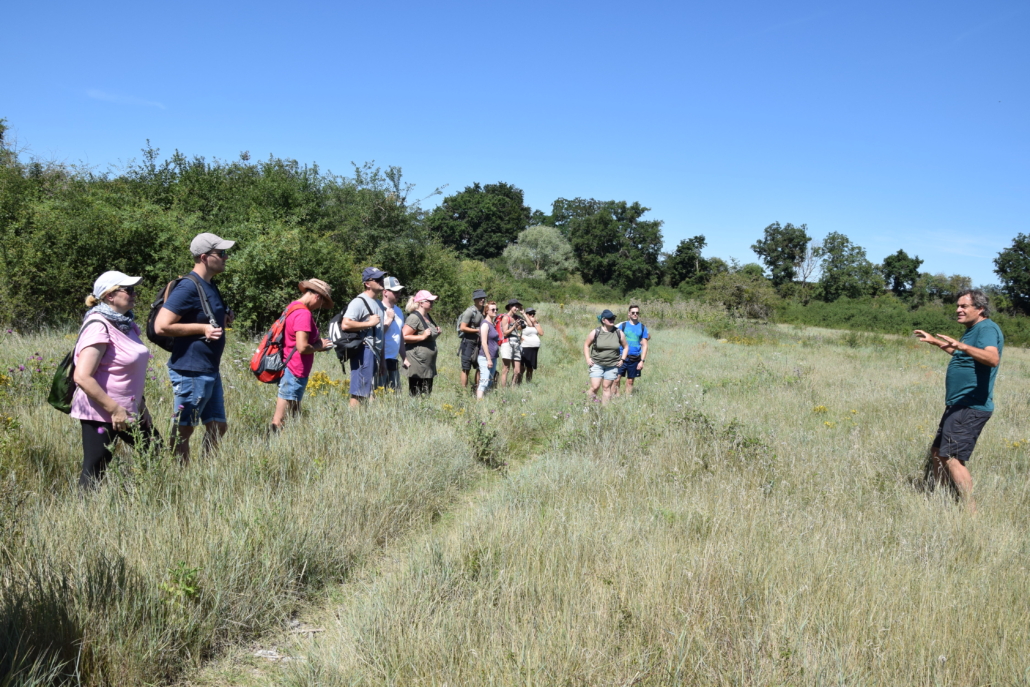
Excursion in Chemilly_Explanations of Gregory Egger (c) Birgit Egger
Furthermore the history of “Le Grand Plan – Plan Loire Grande Nature” (The Big Nature Plan for the Loire catchment) which enabled the development of the “Espace de Liberté”, a concept that gives space to the river through land purchase and law regulation, was introduced by Gregory Egger. The historical happenings that made this major plan possible was presented by Mr. Roberto Epple, President “European rivers network” ERN and part of the “river freedom fighters” at this time. In the 1980ies the river development (hence flood protection, irrigation, etc.) was planned on the Loire river catchment. Against this “the Comité Loire Vivante” was formed which resulted in the concept of “Espace de Liberté” instead of further ”river development”. Later on the NGO “Allier sauvage” has been founded in order to protect river Allier which was presented to the team by its president Mr. Joel Herbach. Today even the Atlantic salmon (Salmo salar) is again migrating up Loire and Allier.
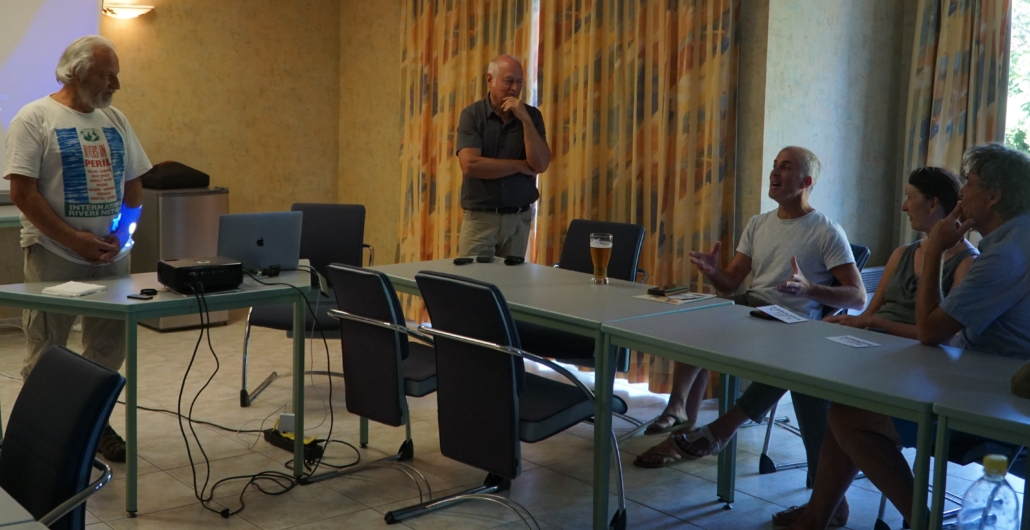
Roberto Epple and Joel Herbach presenting (c) WWF
The second stage of the excursion was a canoe excursion supported by a canoe rental company (Canoë en Terre d’Allier, Base du Veurdre) on river Allier which started from Moulins to the medieval village of Apremont-sur-Allier. Canoeing and swimming down 55 kilometres of the river gave the best impression of the intact riverine ecosystem: natural steep banks, vast gravel and sand islands, a rich diversity of waterfowls, bordering meadows with cows drinking from the river, and a lot of space for the river. Sometimes, the team could not believe that such a riverine paradise over such a long stretch is still possible in the middle of Europe.
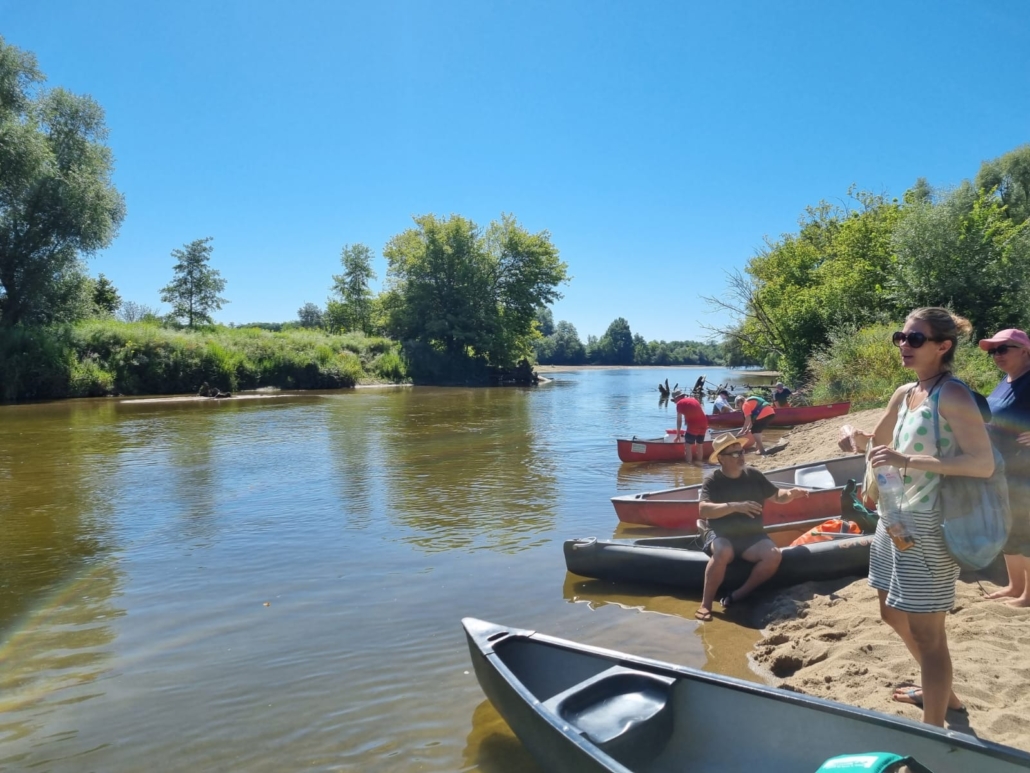
Canoeing (c) WWF
On the last day the confluence of Allier and Loire river close to Bec d´Allier was visited before heading to Paris to catch the night trains back home. Definitely, the concept of river restoration through land purchase and strict regulations for riverine space plus dam prevention and removal is a lesson learned that the DRAVALIFE team took home to river Drava and our restoration efforts.
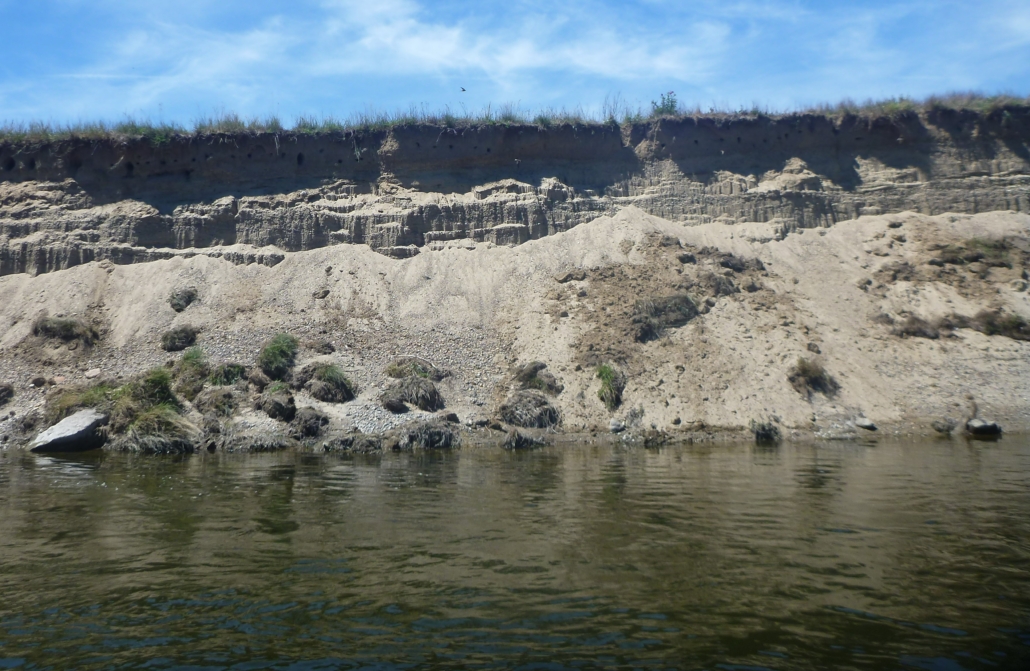
Sand martin colony in a steep bank (c) WWF
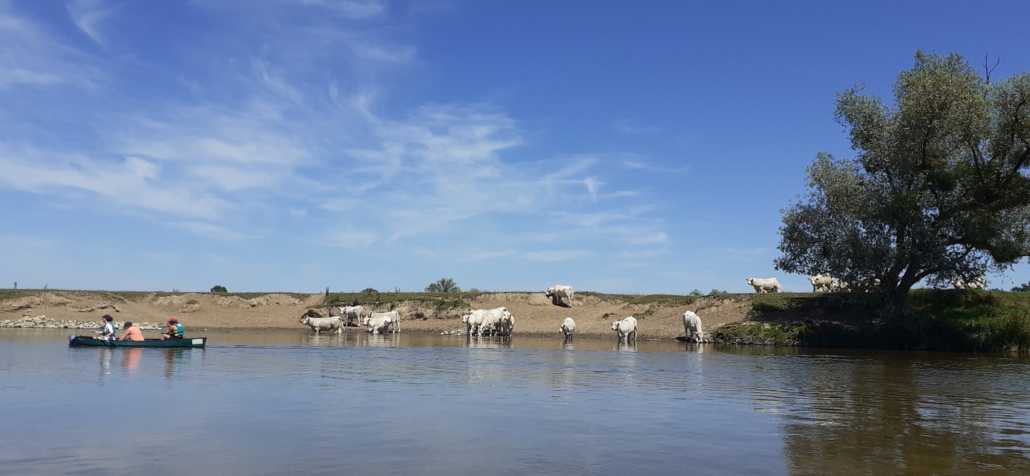
Cattle herd drinking at the river (c) WWF
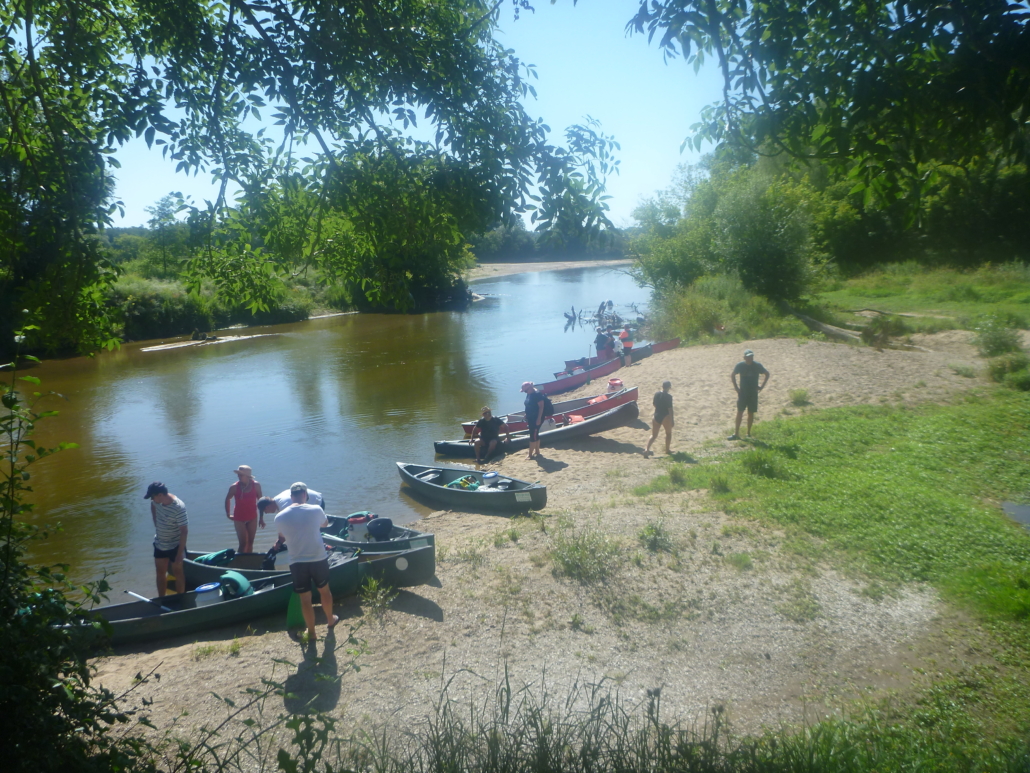
Relaxing after canoeing (c) WWF
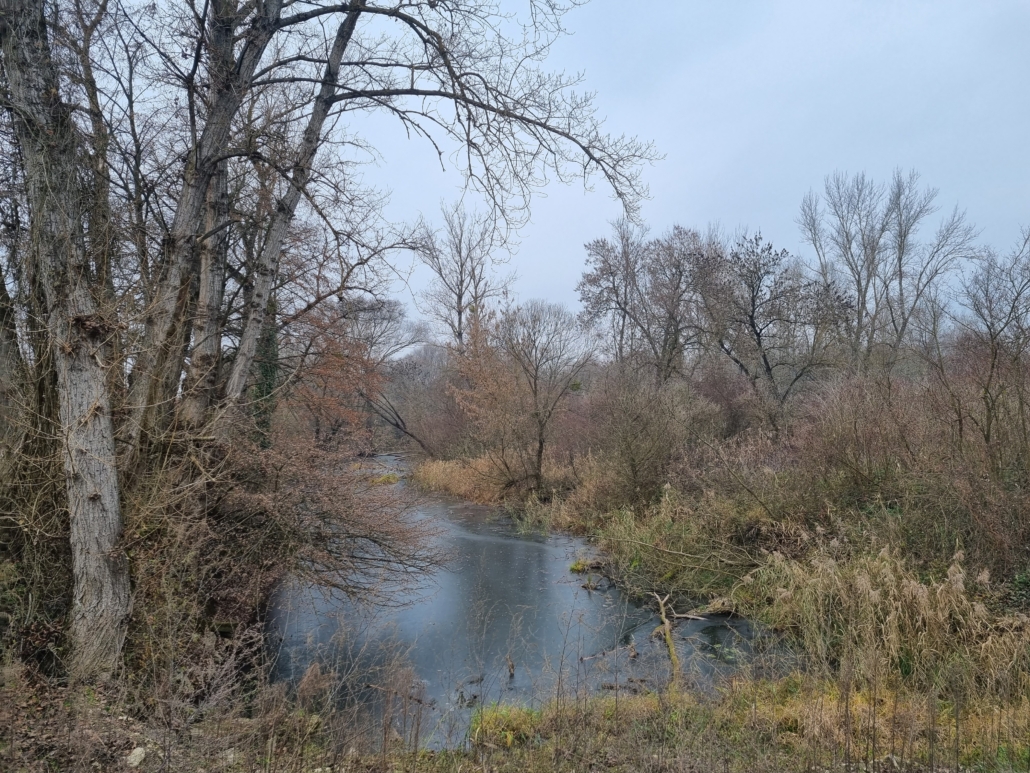
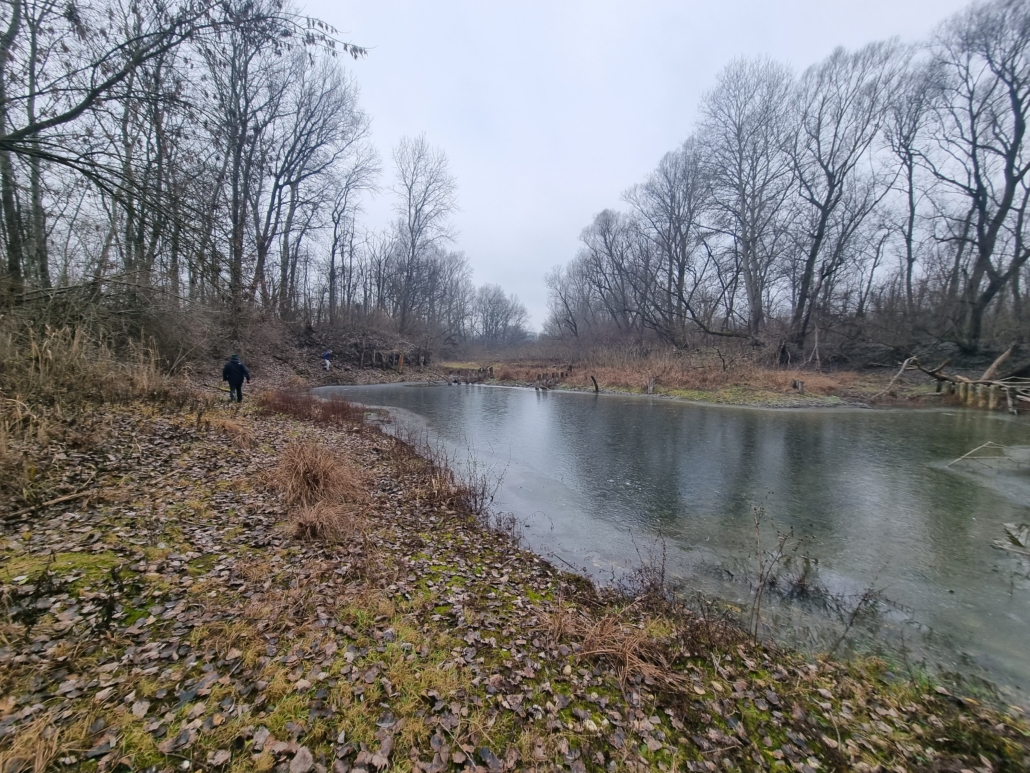
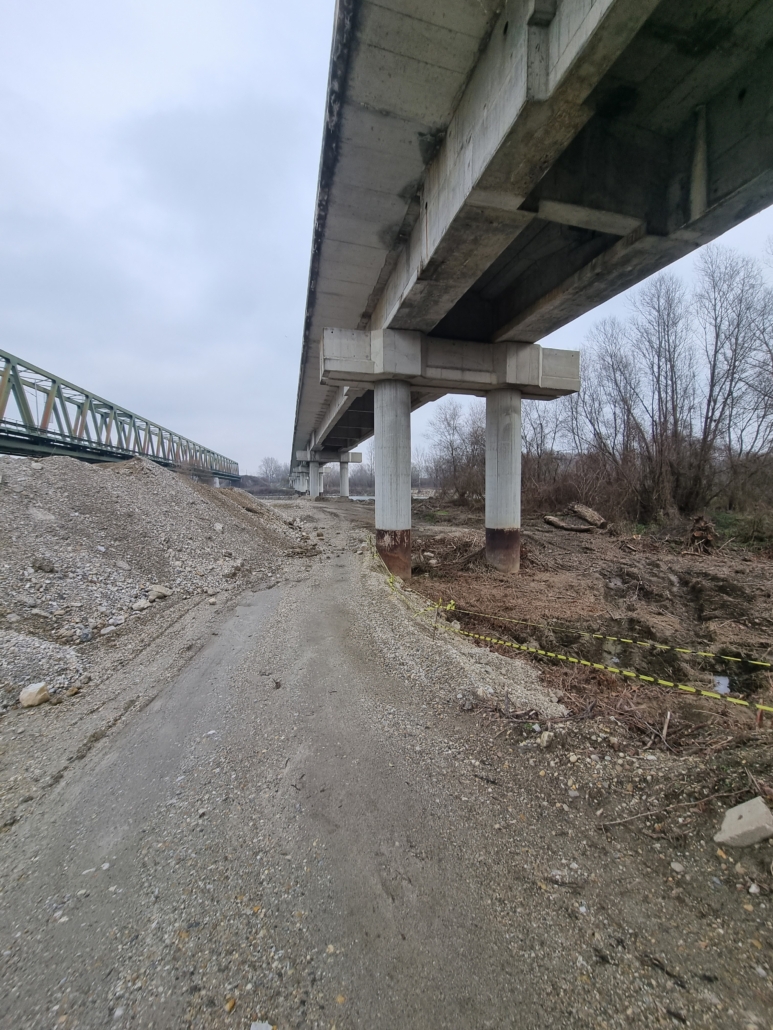

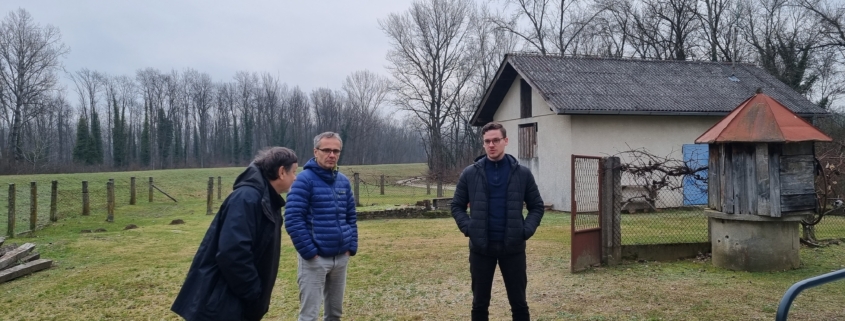
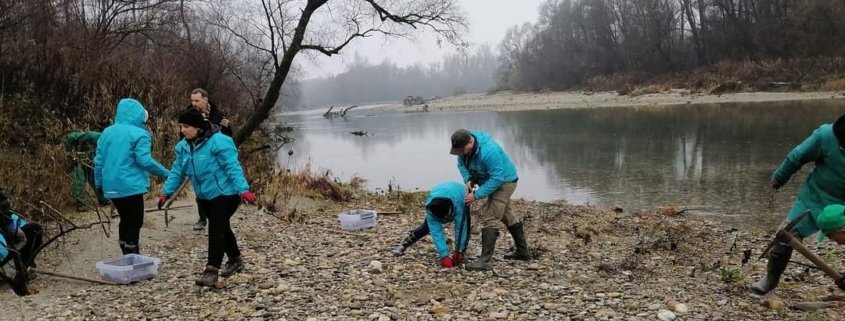 Javna ustanova za upravljanje zaštićenim dijelovima prirode Varaždinske županije
Javna ustanova za upravljanje zaštićenim dijelovima prirode Varaždinske županije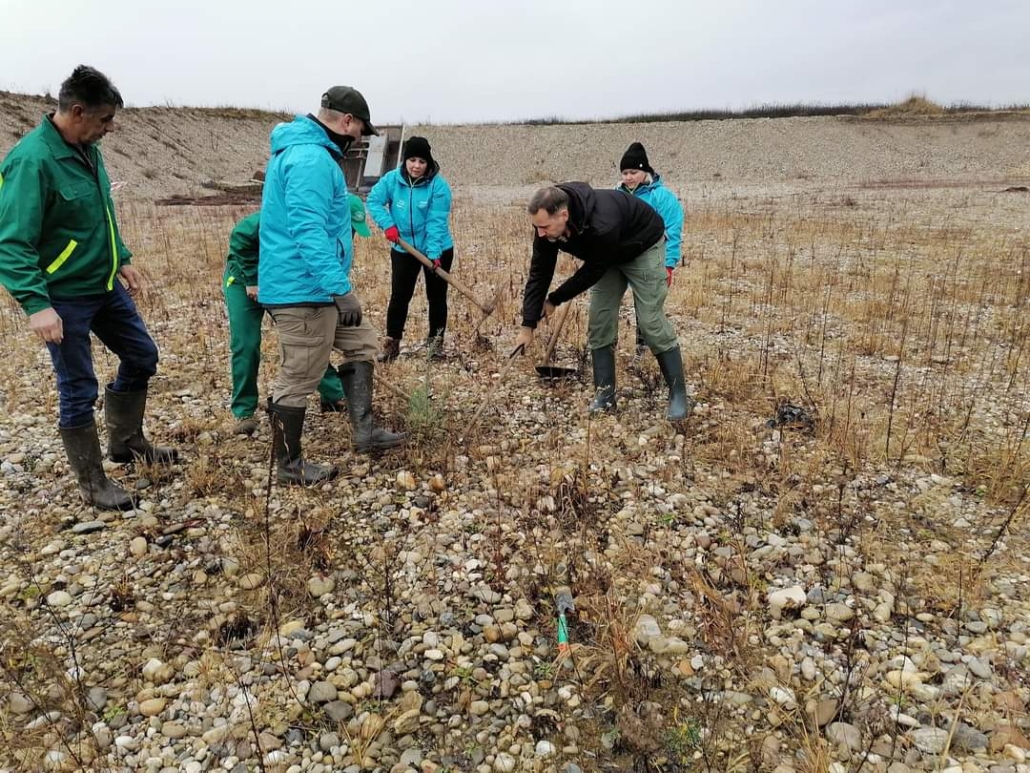
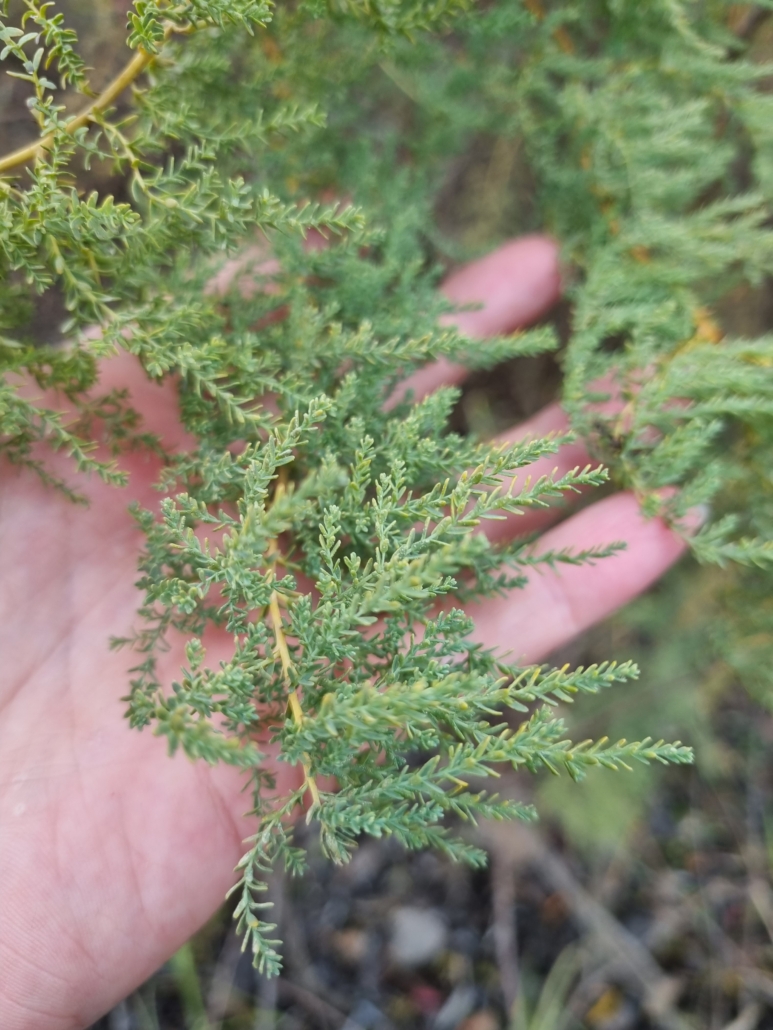
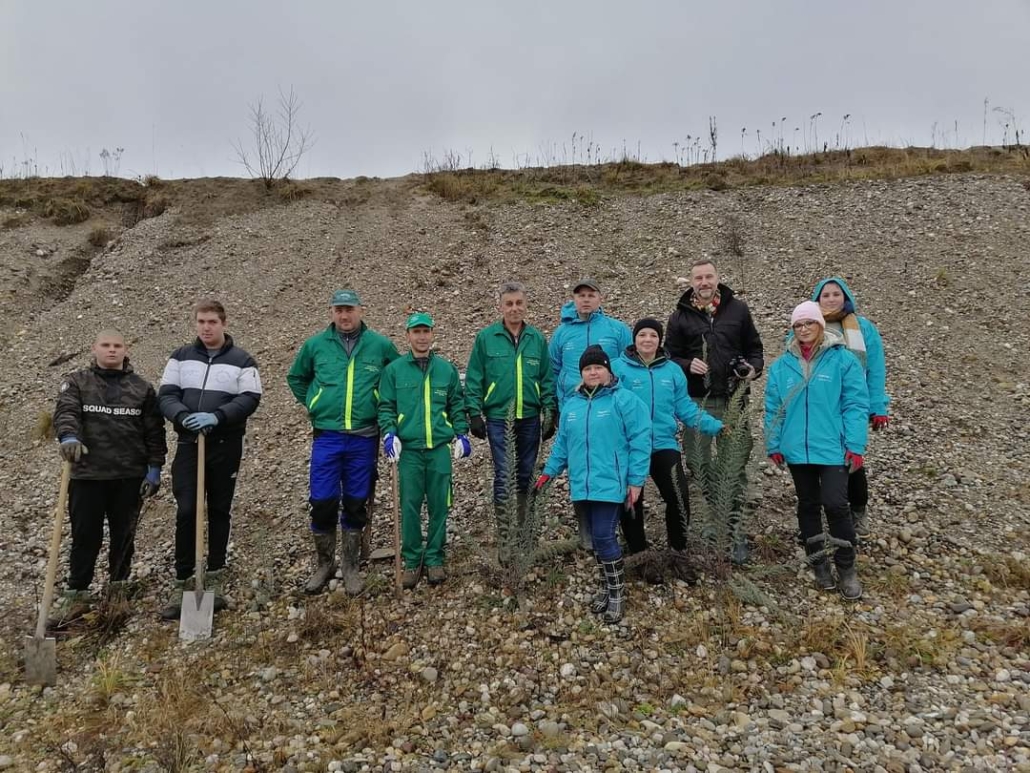
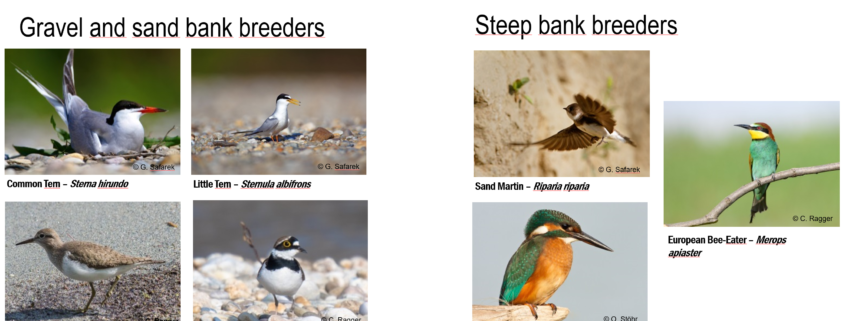
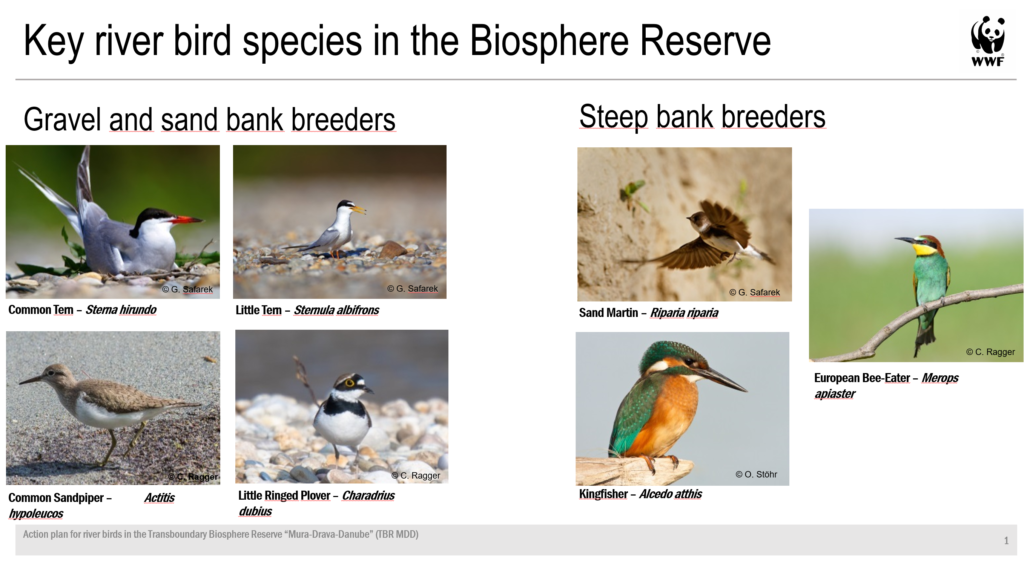
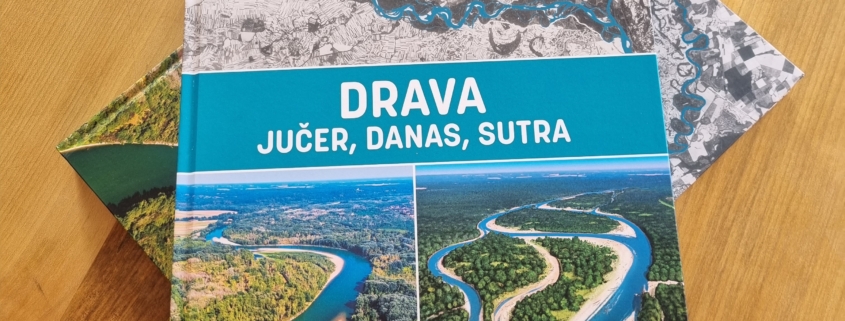 Branka Španiček
Branka Španiček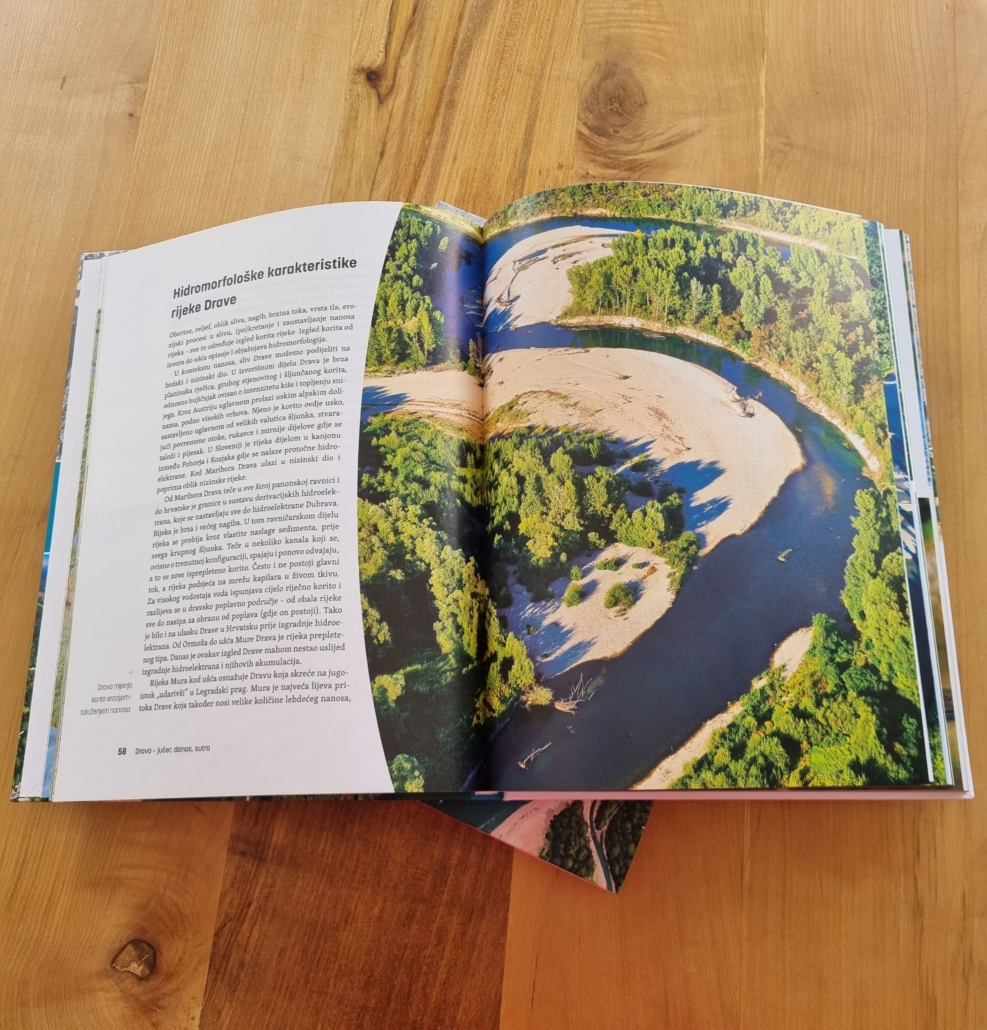
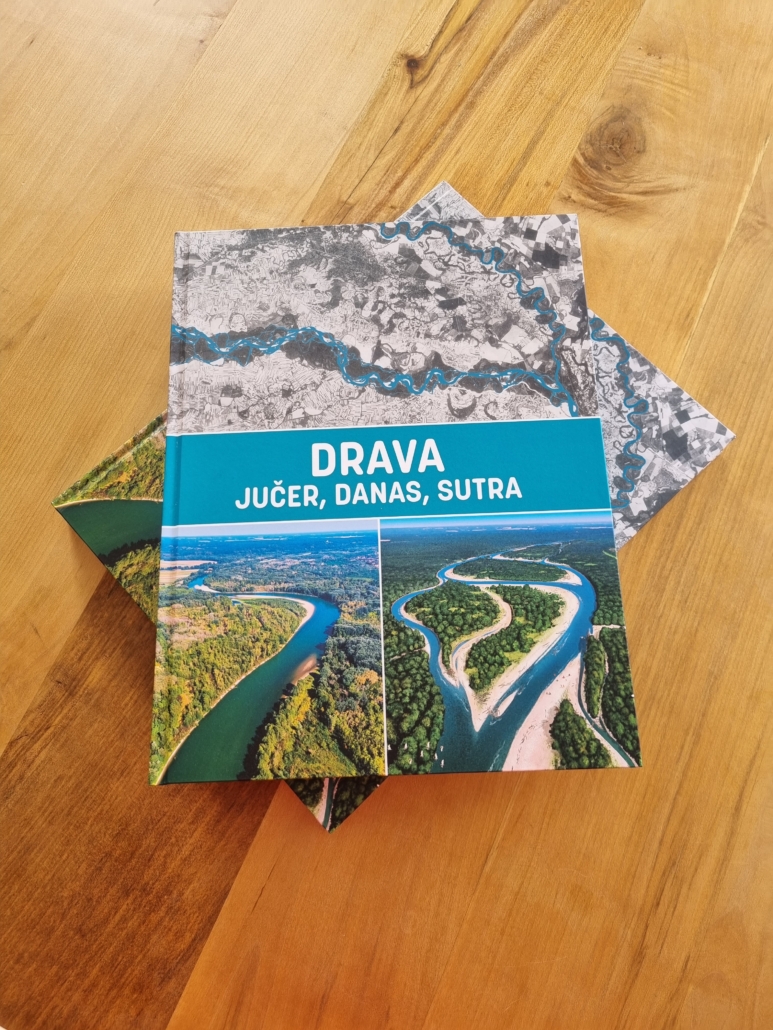
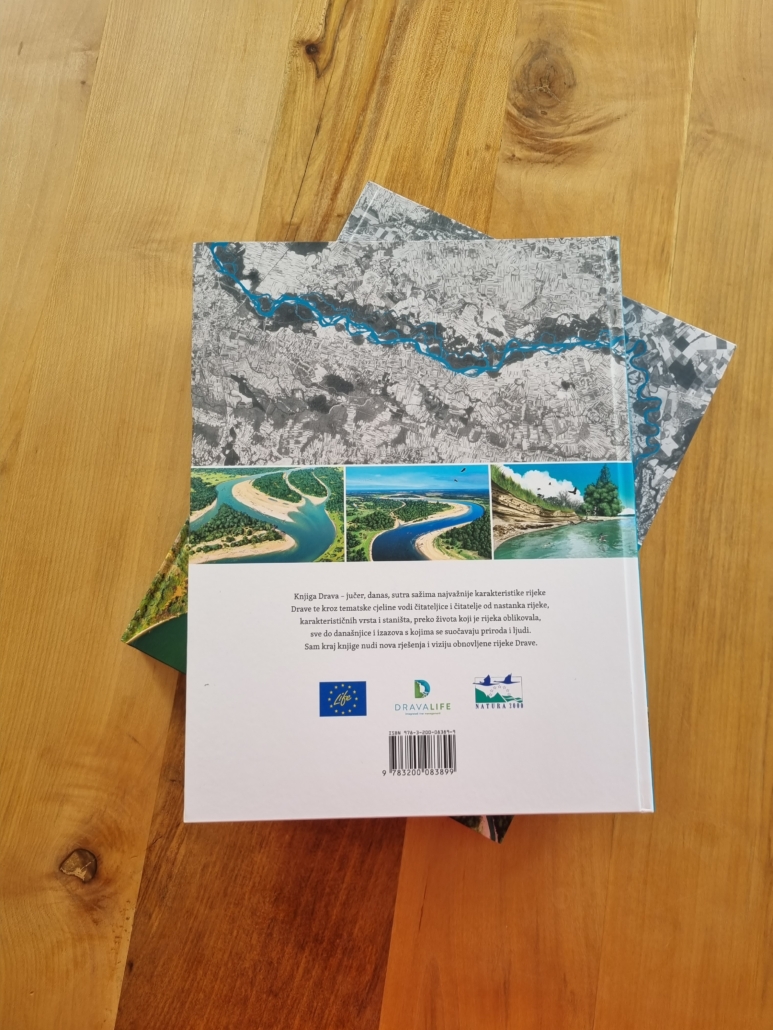
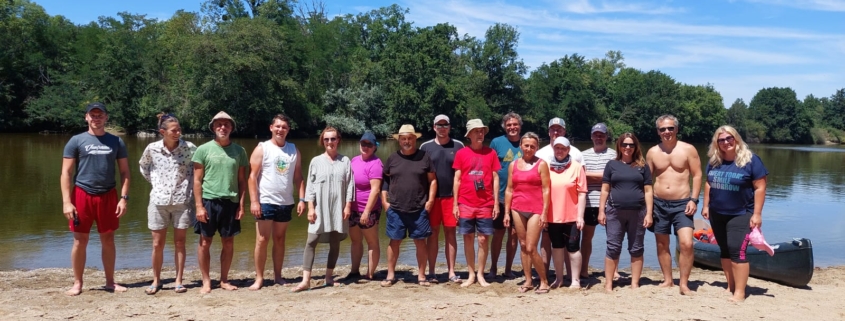 Birgit Egger
Birgit Egger






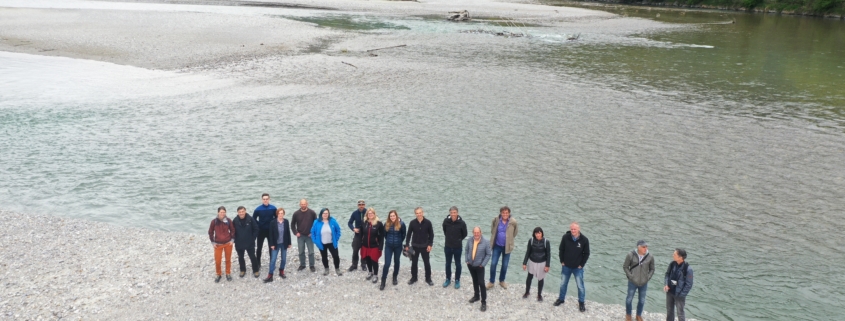 REVITAL
REVITAL